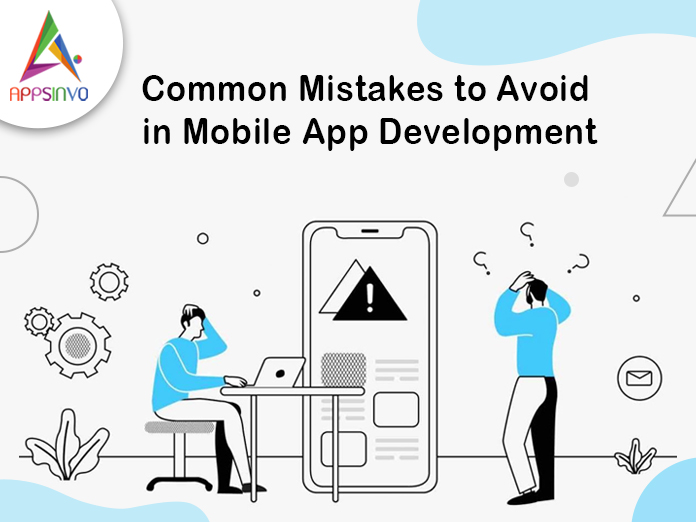Mobile app development is a diverse and challenging process. Many developers and organizations make frequent errors that can jeopardize their app’s success. In this blog post, we’ll go over the key errors to avoid in mobile app development, presented in a point-by-point fashion for clarity.
1. Lack of Clear Objectives
- Define Your Goals: Without specific objectives, your app may lack direction. Determine your objectives and target audience.
- Document characteristics: List key factors that directly support your objectives. This will direct the development process.
2. Ignoring User Experience (UX) Design
- Prioritise Usability: A gorgeous app isn’t enough; it also needs to be easy to use. Concentrate on intuitive navigation and interactions.
- Conduct User Testing: Collect feedback from real users early in the design process to help develop the user interface and increase overall user happiness.
3. Failure to Research the Market
- Analyse competitors: Conduct rigorous market research to better understand your competitors. Determine their strengths and shortcomings.
- Identify User Needs: Learn about what users want and how your app can fill holes in the market.
4. Overloading the Features
- Focus on Core Functions: Resist the urge to offer too many extras. Cluttered apps can mislead users and hinder performance.
- Iterative Development: Begin with key features and then explore adding additional ones based on user feedback and usage data in future updates.
5. Neglecting Platform Differences
- Understand each platform: iOS and Android have distinct design rules and user expectations. During development, treat them as distinct platforms.
- Tailor User Experience: To increase user happiness, optimize your app’s design and functionality for each platform.
6. Poor Performance Optimization
- Test Across Devices: To uncover performance issues, test your app on a variety of devices and under different scenarios.
- Optimise Resources: To ensure smooth performance, consider program size, memory utilization, and the lifespan of the battery.
7. inadequate testing
- Implement a Testing Strategy: Skipping or speeding through testing can result in major issues after launch. Make a complete test plan.
- User Acceptance Testing: Involve real users in the testing process to get useful feedback and ensure that the app satisfies their expectations.
8. Ignoring ASO (App Store Optimisation)
- Optimise Metadata: To increase your app’s exposure in app store searches, include relevant keywords in the title and description.
- Encourage Positive Reviews: Actively seek user input to improve the app’s reputation and ranking in app stores.
9. Lack of post-launch support
- Create a Support Plan: Don’t forget about your app after it’s launched. Develop a strategy for continuing support and updates.
- Monitor Feedback: Keep an eye on user reviews and feedback to handle problems quickly and make improvements.
10. Underestimating marketing efforts.
- Design a Marketing Strategy: A great app requires effective marketing to flourish. Plan your marketing efforts from the beginning.
- Engage with your audience: Use social media, influencer collaborations, and content marketing to generate buzz and drive downloads.
Conclusion
Thus, if you are willing to avoid all these common mistakes, then it is possible to increase the likelihood of success of a given app. When entering a new market one should avoid losing sight of the goals and pay tremendous attention to the following: As you’ve already understood, app development is not over when you release the application – the main work starts here. Android app development isn’t all about spontaneous investment; instead, it can lead to your app standing out in a saturated market.













[…] post Common Mistakes to Avoid in Mobile App Development appeared first on Appsinvo […]
Increase domain rating
Enjoyed every bit of your article post. Fantastic.
[…] Source link […]
This is a really helpful list of app mistakes! It’d be great if you did another post with some real tools and tips on how to actually avoid messing these things up.